Features
Popes and Cardinals
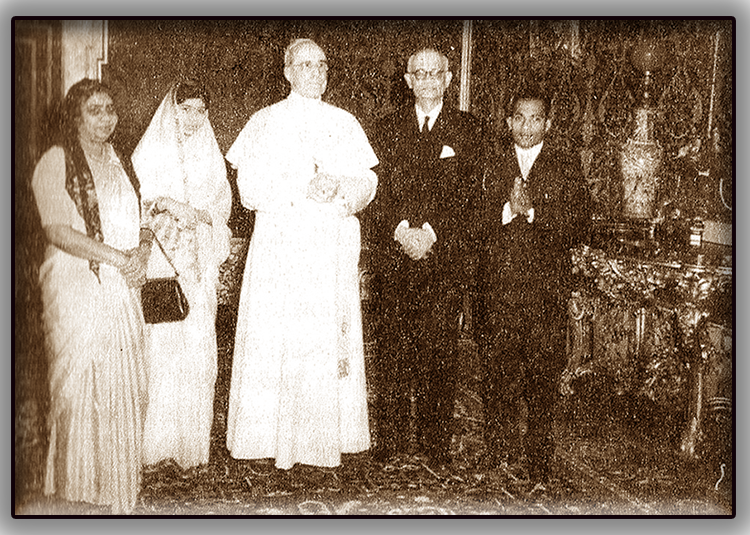
(Excerpted from Selected Journalism by HAJ Hulugalle)
The enthusiasm generated by the election of a new Pope may give the impression that the 500 million Roman Catholics – sometimes derisively called Papists – are a separate species of human beings. That is not the impression I carried away, after a stay of over five years in Rome. Roman Catholics are, I am certain, like the rest of us, capable of all the follies to which human frailty exposes men and women.
The Pope does not dictate the policies of governments; not even those of the Government of Italy which, in recent times has been successively totalitarian, conservative, middle-of – the-road, and left of center.
The Pope himself can be a liberal or a conservative, as the history of the papacy has shown. Pope John was hailed by Mr. Khrushchev, who is very discriminating in these matters, as a man of peace. The new Pope is generally regarded as a progressive. deeply interested in social reform. My impression gained in Rome, is that the Catholic Church expects, indeed insists upon, its members taking their religion seriously, and the Pope is the pastor of the flock under God’s guidance.
There are two large statues of St. Peter and St. Paul in the square of the great Basilica of the Vatican. St. Peter was crucified, not a hundred yards from where these statues stand. It is of interest to note that this happened in the reign of the Emperor Claudius, about the time when, according to Pliny, the Roman historian, three ambassadors from Ceylon visited Rome. St. Paul, too, died in Rome. Since then Rome has been the heart of Christendom.
Though my dealings were with the Italian government, I had many contacts with the hierarchy of the Church. It so happened that I was living in Rome, at an important moment in the history of the Church. I hope you will pardon me if I now draw on a few personal experiences. I was in the square outside the Pope’s summer palace in Castel Gandolfo, a few miles from Rome, when Pius XII was dying, ending a reign of 19 years. I stood with the crowd when his body was taken in solemn procession through the streets of the city to the Vatican, and I was Ceylon’s representative at the funeral.
I was among the many thousands present in St. Peter’s Square when the white smoke from the chimney of the Sistine Chapel announced the election of a new Pope, after three days of inconclusive voting. I was present when Cardinal Canali appeared in the balcony of the basilica and announced that a new Pope had been elected, and that his name would be John XXIII. I was also Ceylon’s representative at the coronation of the new Pope. A few days later, he received the Commonwealth representatives and had a short conversation with each one of us.
During four years, I saw Pius XII on many occasions. I often accompanied Ministers and other VIP’s from Ceylon who wished to see the Pope and receive his blessing. He was a saintly man, somewhat aloof, but with a strong personality. He spoke several languages, one of which was English. I liked above all the public audiences at Castel Gandolfo where he spoke from an upper floor to his listeners congregated in the cortile, what in Sinhalese we would call the ‘Meda Midula’.
The universality of the Church is never felt more than at these public audiences. Men from every nation on earth and, it must be added, from every religion, are usually present. Also on the steps of St. Peter’s, on any Sunday morning, you can be sure of seeing men and women from all parts of the world. I rarely failed to meet one or more Ceylonese whenever I was there on a Sunday morning at any time of the year. They were not always Christians.
Shortly after I arrived in Rome, Monsignor Montini was consecrated Archbishop of Milan, in succession to Cardinal Schuster, who had played a difficult and heroic part during the German occupation and the last days of Mussolini. Montini’s influence was felt both in and outside the Vatican after he left Rome. He had been one of the two Secretaries who assisted Pius XII, the other being Monsignor Tardini.
Pius XII had not appointed a Cardinal Secretary of State since the death of Cardinal Maglione in 1944, and preferred to direct the affairs of the Church personally, rather than nominate a Secretary of State who, in the Vatican government, is Foreign Minister. For the next 10 years Montini was both Prime Minister and the closest associate of Pius XII. It is recorded that both Montini and Tardini refused to be made Cardinals at the consistory of 1953, saying that they preferred to work by the side of the Pope.
There was, however, much speculation when Montini was appointed Archbishop of Milan, the great industrial city of northern Italy, with its powerful trade unions and Communist cells. “He is my gift to Milan”, the Pope had said.
Montini and Tardini had worked in great harmony but they were two different types. Tardini, who continued in the Vatican Secretariat until his death two or three years ago, was a cheerful Neapolitan, cracking jokes and speaking his mind, and slow to make innovations. Montini was a northerner, an intellectual, soft-spoken and deliberate, an accomplished diplomat. He was not afraid of change and had a brother in the progressive wing of the Christian Democrat Party.
It is not usual for a Secretary of State to succeed a Pope under whom he has served. Pacelli, who became Pius XII, was an exception. When Montini was made Archbishop of Milan, there were many who said that, in making the appointment, the Pope showed that he expected Montini to succeed him. Strictly speaking no Pope can nominate his successor. But it was expected that, when Montini was made a Cardinal, in due course and given the red hat, he would be papabile – that is, capable of being made Pope. But when Pius XII died Monsignor Montini was still without a red hat. He had not become a Cardinal. All Popes since Urban XI elected in 1378, however, have been Cardinals. Thus, Montini was not papabile after all.
It may be said that God works in a mysterious way to achieve his purposes. The papacy of John XXIII was interposed between those of Pacelli (i.e. Pius XII) and Montini (now Paul VI), the two men who had worked so closely together for 10 years. Pope John was 77 when he was elected and it was expected that his papacy would be one of transition. But in fact it was a historical interlude – if interlude it can be called – with far-reaching implications and consequences.
Montini’s name appeared at the head of the list of Cardinals created by John XXIII. When a Pope dies he sometimes leaves two or three names in a sealed envelope to his successor containing the names of persons he had intended to appoint to the Sacred College. They are the Cardinals in “petto”- in his breast. It may be that Montini was a Cardinal “in petto” at the time of the death of Pius XII.
Montini’s home town of Brescia is in the north of Italy, near the beautiful Lake Garda. Bergamo, the nearest town to Pope John’s home, is about equidistant from Brescia and Milan. But the background of the present Pope (Paul VI) is different from that of his predecessor, though both had what perhaps Pius XII lacked, and that is, the common touch.
Montini’s early friends included the unconventional and saintly Mayor of Florence, Giorgio La Pira – whom I knew well, Father Dossetti, a mystic and well known social reformer, and the former Prime Minister Amintore Fanfani.
So much has been written, and will be written about the new Pope, that it seems unnecessary for me to try to say more about him.. Let me, for a moment, take you back to the coronation of John XXIII four and a half years ago.
One would be tempted to call the coronation of the Pope the Greatest Show on Earth were the description not too trite and were it not a solemn and sacred ceremony. As a special representative I had a close view of the proceedings but this is of course not the place or time to describe it. Princes of royal blood, Presidents and Prime Ministers of Catholic countries, Foreign Ministers like Mr. Foster Dulles of America, and the Catholic Duke of Norfolk were among the official representatives.
I can recall the faces of the Cardinals, starting from Siri of Genoa in his early fifties, to Rodriguesz of Santiago, Chile in his nineties. A very few of them, like Cardinal Canali, came from aristocratic families.
The papacy is no longer the monopoly of the aristocracy as it was in the Middle Ages. Pius X the former Cardinal Sarto and John XXIII came from simple peasant families. Pope John is said to have made the joke that there are three ways of losing money: wine, women and agriculture; and that his father chose the dullest way of the three. It is more likely that the joke was made up by Romans for they are given to making jests about their Popes.
Personally, I cannot deplore the rich Mediaeval Popes. Much of the beauty of Rome, Florence and other historic Italian cities, is the result of their culture and munificence. The Popes of recent times are no doubt more spiritual but the Renaissance Popes were more magnificent patrons of art and learning.
I know my way about Rome as well as any man, and I speak from first-hand knowledge. For five years I lived on the periphery of the Borghese Gardens, one of the loveliest features in the city. It owed its existence to Pope Paul V, a member of the Borghese family. Not hundred yards from our house was the country residence of Julius III, who was born in 1550. It is an architectural gem in a fine state of preservation. The Medici palace in Rome is now the French Academy, the Farnese houses the French Embassy.
The palaces of the Colonnas, the Dorias, Orsini, Corsini, Barberini, Ruspoli, Odescalchi and Aldobrandini families contained fine collections of paintings and sculpture to which the public have access. The Chigi Palace now houses the offices of the Prime Minister of Italy and his staff. The hills round Rome, the Critelli Romani as they are called, contained many beautiful country houses or villas of the nobility which contributed their quota of Cardinals and one or more Popes.
As I was observing the solemn and beautiful coronation ceremony at St. Peter’s in Rome, I said to myself that never again will a Pope be elected simply because he came from a noble and influential family. He could come from the lesser nobility like Pacelli, from the peasantry like Roncalli or be the son of a newspaper editor like Montini. But he must have the piety and personality which mark him out from his peers for the leadership of five hundred million souls.
(This article was first published in July, 1963)
Features
A wage for housework? India’s sweeping experiment in paying women
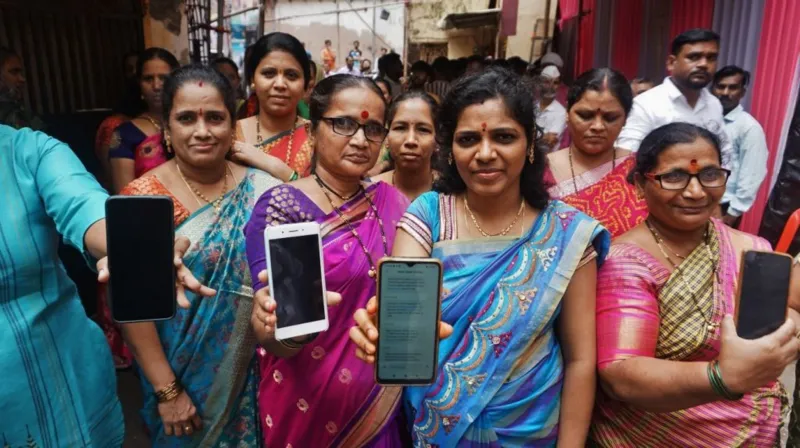
In a village in the central Indian state of Madhya Pradesh, a woman receives a small but steady sum each month – not wages, for she has no formal job, but an unconditional cash transfer from the government.
Premila Bhalavi says the money covers medicines, vegetables and her son’s school fees. The sum, 1,500 rupees ($16: £12), may be small, but its effect – predictable income, a sense of control and a taste of independence – is anything but.
Her story is increasingly common. Across India, 118 million adult women in 12 states now receive unconditional cash transfers from their governments, making India the site of one of the world’s largest and least-studied social-policy experiments.
Long accustomed to subsidising grain, fuel and rural jobs, India has stumbled into something more radical: paying adult women simply because they keep households running, bear the burden of unpaid care and form an electorate too large to ignore.
Eligibility filters vary – age thresholds, income caps and exclusions for families with government employees, taxpayers or owners of cars or large plots of land.
“The unconditional cash transfers signal a significant expansion of Indian states’ welfare regimes in favour of women,” Prabha Kotiswaran, a professor of law and social justice at King’s College London, told the BBC.
The transfers range from 1,000-2,500 rupees ($12-$30) a month – meagre sums, worth roughly 5-12% of household income, but regular. With 300 million women now holding bank accounts, transfers have become administratively simple.
Women typically spend the money on household and family needs – children’s education, groceries, cooking gas, medical and emergency expenses, retiring small debts and occasional personal items like gold or small comforts.
What sets India apart from Mexico, Brazil or Indonesia – countries with large conditional cash-transfer schemes – is the absence of conditions: the money arrives whether or not a child attends school or a household falls below the poverty line.
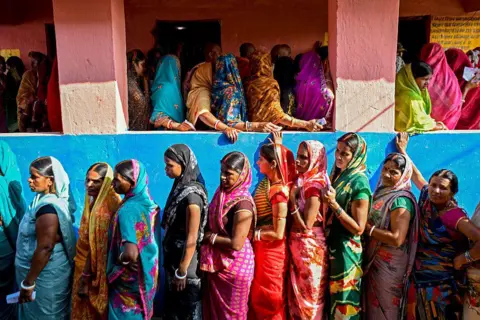
Goa was the first state to launch an unconditional cash transfer scheme to women in 2013. The phenomenon picked up just before the pandemic in 2020, when north-eastern Assam rolled out a scheme for vulnerable women. Since then these transfers have turned into a political juggernaut.
The recent wave of unconditional cash transfers targets adult women, with some states acknowledging their unpaid domestic and care work. Tamil Nadu frames its payments as a “rights grant” while West Bengal’s scheme similarly recognises women’s unpaid contributions.
In other states, the recognition is implicit: policymakers expect women to use the transfers for household and family welfare, say experts.
This focus on women’s economic role has also shaped politics: in 2021, Tamil actor-turned-politician Kamal Haasan promised “salaries for housewives”. (His fledgling party lost.) By 2024, pledges of women-focused cash transfers helped deliver victories to political parties in Maharashtra, Jharkhand, Odisha, Haryana and Andhra Pradesh.
In the recent elections in Bihar, the political power of cash transfers was on stark display. In the weeks before polling in the country’s poorest state, the government transferred 10,000 rupees ($112; £85) to 7.5 million female bank accounts under a livelihood-generation scheme. Women voted in larger numbers than men, decisively shaping the outcome.
Critics called it blatant vote-buying, but the result was clear: women helped the Bharatiya Janata Party (BJP)-led coalition secure a landslide victory. Many believe this cash infusion was a reminder of how financial support can be used as political leverage.
Yet Bihar is only one piece of a much larger picture. Across India, unconditional cash transfers are reaching tens of millions of women on a regular basis.
Maharashtra alone promises benefits for 25 million women; Odisha’s scheme reaches 71% of its female voters.
In some policy circles, the schemes are derided as vote-buying freebies. They also put pressure on state finances: 12 states are set to spend around $18bn on such payouts this fiscal year. A report by think-tank PRS Legislative Research notes that half of these states face revenue deficits – this happens when a state borrows to pay regular expenses without creating assets.
But many argue they also reflect a slow recognition of something India’s feminists have argued for decades: the economic value of unpaid domestic and care work.
Women in India spent nearly five hours a day on such work in 2024 – more than three times the time spent by men, according to the latest Time Use Survey. This lopsided burden helps explain India’s stubbornly low female labour-force participation. The cash transfers, at least, acknowledge the imbalance, experts say.
Do they work?
Evidence is still thin but instructive. A 2025 study in Maharashtra found that 30% of eligible women did not register – sometimes because of documentation problems, sometimes out of a sense of self-sufficiency. But among those who did, nearly all controlled their own bank accounts.
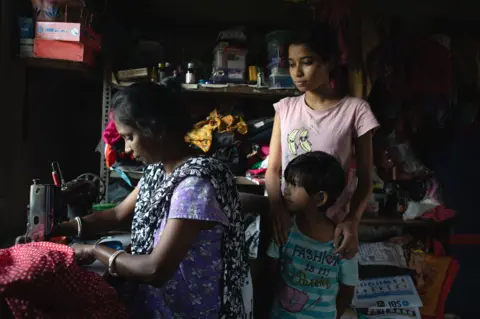
A 2023 survey in West Bengal found that 90% operated their accounts themselves and 86% decided how to spend the money. Most used it for food, education and medical costs; hardly transformative, but the regularity offered security and a sense of agency.
More detailed work by Prof Kotiswaran and colleagues shows mixed outcomes.
In Assam, most women spent the money on essentials; many appreciated the dignity it afforded, but few linked it to recognition of unpaid work, and most would still prefer paid jobs.
In Tamil Nadu, women getting the money spoke of peace of mind, reduced marital conflict and newfound confidence – a rare social dividend. In Karnataka, beneficiaries reported eating better, gaining more say in household decisions and wanting higher payments.
Yet only a sliver understood the scheme as compensation for unpaid care work; messaging had not travelled. Even so, women said the money allowed them to question politicians and manage emergencies. Across studies, the majority of women had full control of the cash.
“The evidence shows that the cash transfers are tremendously useful for women to meet their own immediate needs and those of their households. They also restore dignity to women who are otherwise financially dependent on their husbands for every minor expense,” Prof Kotiswaran says.
Importantly, none of the surveys finds evidence that the money discourages women from seeking paid work or entrench gender roles – the two big feminist fears, according to a report by Prof Kotiswaran along with Gale Andrew and Madhusree Jana.
Nor have they reduced women’s unpaid workload, the researchers find. They do, however, strengthen financial autonomy and modestly strengthen bargaining power. They are neither panacea nor poison: they are useful but limited tools, operating in a patriarchal society where cash alone cannot undo structural inequities.
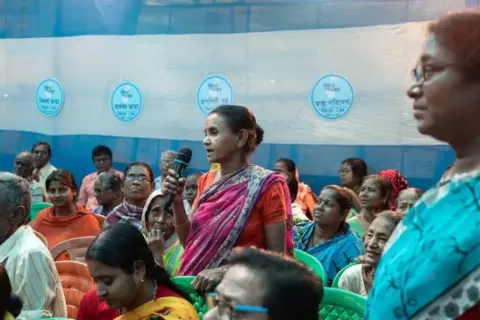
What next?
The emerging research offers clear hints.
Eligibility rules should be simplified, especially for women doing heavy unpaid care work. Transfers should remain unconditional and independent of marital status.
But messaging should emphasise women’s rights and the value of unpaid work, and financial-literacy efforts must deepen, researchers say. And cash transfers cannot substitute for employment opportunities; many women say what they really want is work that pays and respect that endures.
“If the transfers are coupled with messaging on the recognition of women’s unpaid work, they could potentially disrupt the gendered division of labour when paid employment opportunities become available,” says Prof Kotiswaran.
India’s quiet cash transfers revolution is still in its early chapters. But it already shows that small, regular sums – paid directly to women – can shift power in subtle, significant ways.
Whether this becomes a path to empowerment or merely a new form of political patronage will depend on what India chooses to build around the money.
[BBC]
Features
People set example for politicians to follow

Some opposition political parties have striven hard to turn the disaster of Cyclone Ditwah to their advantage. A calamity of such unanticipated proportions ought to have enabled all political parties to come together to deal with this tragedy. Failure to do so would indicate both political and moral bankruptcy. The main issue they have forcefully brought up is the government’s failure to take early action on the Meteorological Department’s warnings. The Opposition even convened a meeting of their own with former President Ranil Wickremesinghe and other senior politicians who shared their experience of dealing with natural and man-made disasters of the past, and the present government’s failures to match them.
The difficulty to anticipate the havoc caused by the cyclone was compounded by the neglect of the disaster management system, which includes previous governments that failed to utilise the allocated funds in an open, transparent and corruption free manner. Land designated as “Red Zones” by the National Building Research Organisation (NBRO), a government research and development institute, were built upon by people and ignored by successive governments, civil society and the media alike. NBRO was established in 1984. According to NBRO records, the decision to launch a formal “Landslide Hazard Zonation Mapping Project (LHMP)” dates from 1986. The institutional process of identifying landslide-prone slopes, classifying zones (including what we today call “Red Zones”), and producing hazard maps, started roughly 35 to 40 years ago.
Indonesia, Thailand and the Philippines which were lashed by cyclones at around the same time as Sri Lanka experienced Cyclone Ditwah were also unprepared and also suffered enormously. The devastation caused by cyclones in the larger southeast Asian region is due to global climate change. During Cyclone Ditwah some parts of the central highlands received more than 500 mm of rainfall. Official climatological data cite the average annual rainfall for Sri Lanka as roughly 1850 mm though this varies widely by region: from around 900 mm in the dry zones up to 5,000 mm in wet zones. The torrential rains triggered by Ditwah were so heavy that for some communities they represented a rainfall surge comparable to a major part of their typical annual rainfall.
Inclusive Approach
Climate change now joins the pantheon of Sri Lanka’s challenges that are beyond the ability of a single political party or government to resolve. It is like the economic bankruptcy, ethnic conflict and corruption in governance that requires an inclusive approach in which the Opposition, civil society, religious society and the business community need to join rather than merely criticise the government. It will be in their self-interest to do so. A younger generation (Gen Z), with more energy and familiarity with digital technologies filled, the gaps that the government was unable to fill and, in a sense, made both the Opposition and traditional civil society redundant.
Within hours of news coming in that floods and landslides were causing havoc to hundreds of thousands of people, a people’s movement for relief measures was underway. There was no one organiser or leader. There were hundreds who catalysed volunteers to mobilise to collect resources and to cook meals for the victims in community kitchens they set up. These community kitchens sprang up in schools, temples, mosques, garages and even roadside stalls. Volunteers used social media to crowdsource supplies, match donors with delivery vehicles, and coordinate routes that had become impassable due to fallen trees or mudslides. It was a level of commitment and coordination rarely achieved by formal institutions.
The spontaneous outpouring of support was not only a youth phenomenon. The larger population, too, contributed to the relief effort. The Galle District Secretariat sent 23 tons of rice to the cyclone affected areas from donations brought by the people. The Matara District Secretariat made arrangements to send teams of volunteers to the worst affected areas. Just as in the Aragalaya protest movement of 2022, those who joined the relief effort were from all ethnic and religious communities. They gave their assistance to anyone in need, regardless of community. This showed that in times of crisis, Sri Lankans treat others without discrimination as human beings, not as members of specific communities.
Turning Point
The challenge to the government will be to ensure that the unity among the people that the cyclone disaster has brought will outlive the immediate relief phase and continue into the longer term task of national reconstruction. There will be a need to rethink the course of economic development to ensure human security. President Anura Kumara Dissanayake has spoken about the need to resettle all people who live above 5000 feet and to reforest those areas. This will require finding land for resettlement elsewhere. The resettlement of people in the hill country will require that the government address the issue of land rights for the Malaiyaha Tamils.
Since independence the Malaiyaha Tamils have been collectively denied ownership to land due first to citizenship issues and now due to poverty and unwillingness of plantation managements to deal with these issues in a just and humanitarian manner beneficial to the workers. Their resettlement raises complex social, economic and political questions. It demands careful planning to avoid repeating past mistakes where displaced communities were moved to areas lacking water, infrastructure or livelihoods. It also requires political consensus, as land is one of the most contentious issues in Sri Lanka, tied closely to identity, ethnicity and historical grievances. Any sustainable solution must go beyond temporary relocation and confront the historical exclusion of the Malaiyaha Tamil community, whose labour sustains the plantation economy but who remain among the poorest groups in the country.
Cyclone Ditwah has thus become a turning point. It has highlighted the need to strengthen governance and disaster preparedness, but it has also revealed a different possibility for Sri Lanka, one in which the people lead with humanity and aspire for the wellbeing of all, and the political leadership emulates their example. The people have shown through their collective response to Cyclone Ditwah that unity and compassion remain strong, which a sincere, moral and hardworking government can tap into. The challenge to the government will be to ensure that the unity among the people that the cyclone disaster has brought will outlive the immediate relief phase and continue into the longer term task of national reconstruction with political reconciliation.
by Jehan Perera
Features
An awakening: Revisiting education policy after Cyclone Ditwah

 In the short span of two or three days, Cyclone Ditwah, has caused a disaster of unprecedented proportions in our midst. Lashing away at almost the entirety of the country, it has broken through the ramparts of centuries old structures and eroded into areas, once considered safe and secure.
In the short span of two or three days, Cyclone Ditwah, has caused a disaster of unprecedented proportions in our midst. Lashing away at almost the entirety of the country, it has broken through the ramparts of centuries old structures and eroded into areas, once considered safe and secure.
The rains may have passed us by. The waters will recede, shops will reopen, water will be in our taps, and we can resume the daily grind of life. But it will not be the same anymore; it should not be. It should not be business as usual for any of us, nor for the government. Within the past few years, Sri Lankan communities have found themselves in the middle of a crisis after crisis, both natural and man-made, but always made acute by the myopic policies of successive governments, and fuelled by the deeply hierarchical, gendered and ethnicised divides that exist within our societies. The need of the hour for the government today is to reassess its policies and rethink the directions the country, as a whole, has been pushed into.
Neoliberal disaster
In the aftermath of the devastation caused by the natural disaster, fundamental questions have been raised about our existence. Our disaster is, in whole or in part, the result of a badly and cruelly managed environment of the planet. Questions have been raised about the nature of our economy. We need to rethink the way land is used. Livelihoods may have to be built anew, promoting people’s welfare, and by deveoloping a policy on climate change. Mega construction projects is a major culprit as commentators have noted. Landslides in the upcountry are not merely a result of Ditwah lashing at our shores and hills, but are far more structural and points to centuries of mismanagement of land. (https://island.lk/weather-disasters-sri-lanka-flooded-by-policy-blunders-weak-enforcement-and-environmental-crime-climate-expert/). It is also about the way people have been shunted into lands, voluntarily or involuntarily, that are precarious, in their pursuit of a viable livelihood, within the limited opportunities available to them.
Neo liberal policies that demand unfettered land appropriation and built on the premise of economic growth at any expense, leading to growing rural-urban divides, need to be scrutinised for their short and long term consequences. And it is not that any of these economic drives have brought any measure of relief and rejuvenation of the economy. We have been under the tyrannical hold of the IMF, camouflaged as aid and recovery, but sinking us deeper into the debt trap. In October 2025, Ahilan Kadirgamar writes, that the IMF programme by the end of 2027, “will set up Sri Lanka for the next crisis.” He also lambasts the Central Bank and the government’s fiscal policy for their punishing interest rates in the context of disinflation and rising poverty levels. We have had to devalue the rupee last month, and continue to rely on the workforce of domestic workers in West Asia as the major source of foreign exchange. The government’s negotiations with the IMF have focused largely on relief and infrastructure rebuilding, despite calls from civil society, demanding debt justice.
The government has unabashedly repledged its support for the big business class. The cruelest cut of them all is the appointment of a set of high level corporate personalities to the post-disaster recovery committee, with the grand name, “Rebuilding Sri Lanka.” The message is loud and clear, and is clearly a slap in the face of the working people of the country, whose needs run counter to the excessive greed of extractive corporate freeloaders. Economic growth has to be understood in terms that are radically different from what we have been forced to think of it as, till now. For instance, instead of investment for high profits, and the business of buy and sell in the market, rechannel investment and labour into overall welfare. Even catch phrases like sustainable development have missed their mark. We need to think of the economy more holistically and see it as the sustainability of life, livelihood and the wellbeing of the planet.
The disaster has brought on an urgency for rethinking our policies. One of the areas where this is critical is education. There are two fundamental challenges facing education: Budget allocation and priorities. In an address at a gathering of the Chamber of Commerce, on 02 December, speaking on rebuilding efforts, the Prime Minister and Minister of Education Dr. Harini Amarasuriya restated her commitment to the budget that has been passed, a budget that has a meagre 2.4% of the GDP allocated for education. This allocation for education comes in a year that educational reforms are being rolled out, when heavy expenses will likely be incurred. In the aftermath of the disaster, this has become more urgent than ever.
Reforms in Education
The Government has announced a set of amendments to educational policy and implementation, with little warning and almost no consultation with the public, found in the document, Transforming General Education in Sri Lanka 2025 published by the Ministry of Education. Though hailed as transformative by the Prime Minister (https://www.news.lk/current-affairs/in-the-prevailing-situation-it-is-necessary-to-act-strategically-while-creating-the-proper-investments-ensuring-that-actions-are-discharged-on-proper-policies-pm), the policy is no more than a regurgitation of what is already there, made worse. There are a few welcome moves, like the importance placed on vocational training. Here, I want to raise three points relating to vital areas of the curriculum that are of concern: 1) streamlining at an early age; relatedly 2) prioritising and privileging what is seen as STEM education; and 3) introducing a credit-based modular education.
1. A study of the policy document will demonstrate very clearly that streamlining begins with Junior Secondary Education via a career interest test, that encourages students to pursue a particular stream in higher studies. Further Learning Modules at both “Junior Secondary Education” and “Senior Secondary Education Phase I,” entrench this tendency. Psychometric testing, that furthers this goal, as already written about in our column (https://kuppicollective.lk/psychometrics-and-the-curriculum-for-general-education/) points to the bizarre.
2. The kernel of the curriculum of the qualifying examination of Senior Secondary Education Phase I, has five mandatory subjects, including First Language, Math, and Science. There is no mandatory social science or humanities related subject. One can choose two subjects from a set of electives that has history and geography as separate subjects, but a Humanities/Social Science subject is not in the list of mandatory subjects. .
3. A credit-based, modular education: Even in universities, at the level of an advanced study of a discipline, many of us are struggling with module-based education. The credit system promotes a fragmented learning process, where, depth is sacrificed for quick learning, evaluated numerically, in credit values.
Units of learning, assessed, piece meal, are emphasised over fundamentals and the detailing of fundamentals. Introducing a module based curriculum in secondary education can have an adverse impact on developing the capacity of a student to learn a subject in a sustained manner at deeper levels.
Education wise, and pedagogically, we need to be concerned about rigidly compartmentalising science oriented, including technological subjects, separately from Humanities and Social Studies. This cleavage is what has led to the idea of calling science related subjects, STEM, automatically devaluing humanities and social sciences. Ironically, universities, today, have attempted, in some instances, to mix both streams in their curriculums, but with little success; for the overall paradigm of education has been less about educational goals and pedagogical imperatives, than about technocratic priorities, namely, compartmentalisation, fragmentation, and piecemeal consumerism. A holistic response to development needs to rethink such priorities, categorisations and specialisations. A social and sociological approach has to be built into all our educational and development programmes.
National Disasters and Rebuilding Community
In the aftermath of the disaster, the role of education has to be rethought radically. We need a curriculum that is not trapped in the dichotomy of STEM and Humanities, and be overly streamlined and fragmented. The introduction of climate change as a discipline, or attention to environmental destruction cannot be a STEM subject, a Social Science/Humanities subject or even a blend of the two. It is about the vision of an economic-cum-educational policy that sees the environment and the economy as a function of the welfare of the people. Educational reforms must be built on those fundamentals and not on real or imagined short term goals, promoted at the economic end by neo liberal policies and the profiteering capitalist class.
As I write this, the sky brightens with its first streaks of light, after days of incessant rain and gloom, bringing hope into our hearts, and some cheer into the hearts of those hundreds of thousands of massively affected people, anxiously waiting for a change in the weather every second of their lives. The sense of hope that allows us to forge ahead is collective and social. The response by Lankan communities, to the disaster, has been tremendously heartwarming, infusing hope into what still is a situation without hope for many. This spirit of collective endeavour holds the promise for what should be the foundation for recovery. People’s demands and needs should shape the re-envisioning of policy, particularly in the vital areas of education and economy.
(Sivamohan Sumathy was formerly attached to the Department of English, University of Peradeniya)
Kuppi is a politics and pedagogy happening on the margins of the lecture hall that parodies, subverts, and simultaneously reaffirms social hierarchies.
By Sivamohan Sumathy
-
News7 days ago
Lunuwila tragedy not caused by those videoing Bell 212: SLAF
-

 News2 days ago
News2 days agoOver 35,000 drug offenders nabbed in 36 days
-
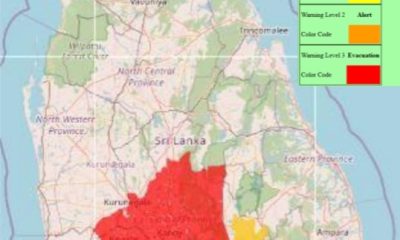
 News6 days ago
News6 days agoLevel III landslide early warning continue to be in force in the districts of Kandy, Kegalle, Kurunegala and Matale
-

 Business4 days ago
Business4 days agoLOLC Finance Factoring powers business growth
-

 News4 days ago
News4 days agoCPC delegation meets JVP for talks on disaster response
-
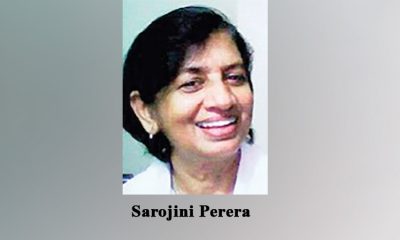
 News4 days ago
News4 days agoA 6th Year Accolade: The Eternal Opulence of My Fair Lady
-

 News2 days ago
News2 days agoRising water level in Malwathu Oya triggers alert in Thanthirimale
-

 Midweek Review7 days ago
Midweek Review7 days agoHouse erupts over Met Chief’s 12 Nov unheeded warning about cyclone Ditwah
















